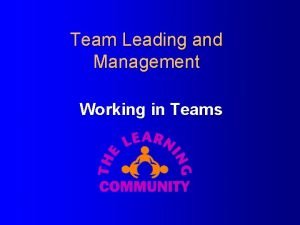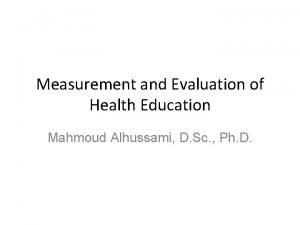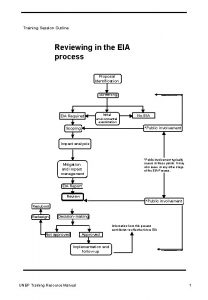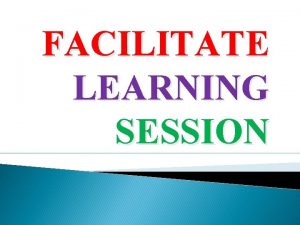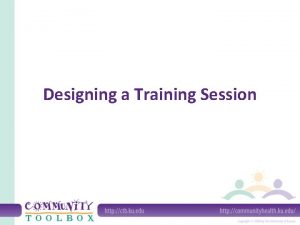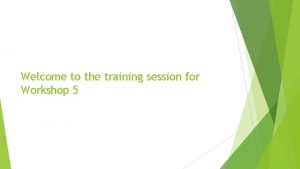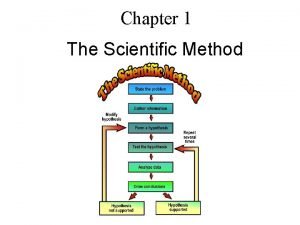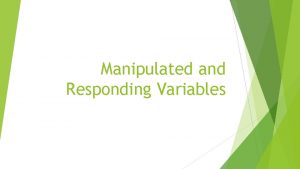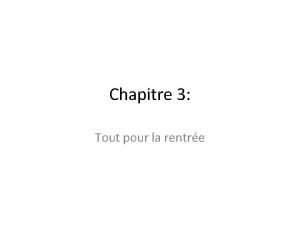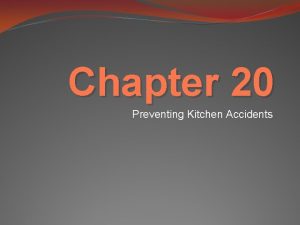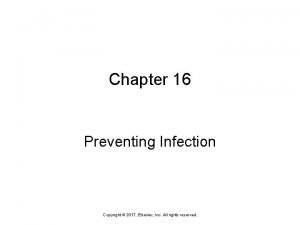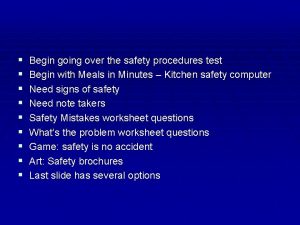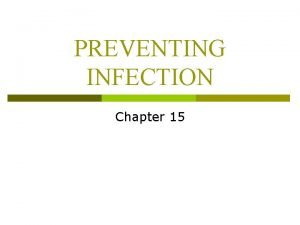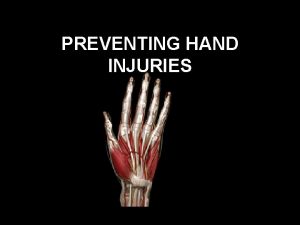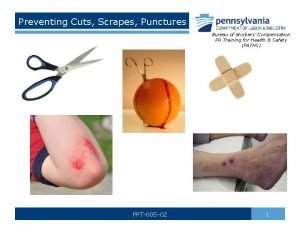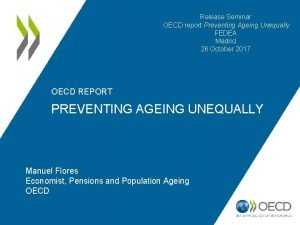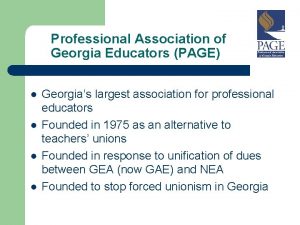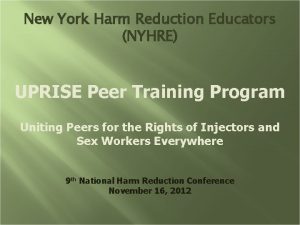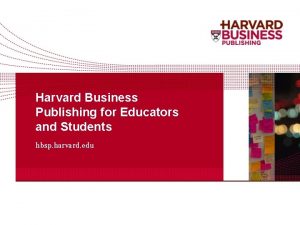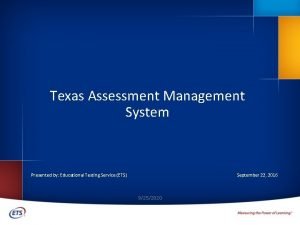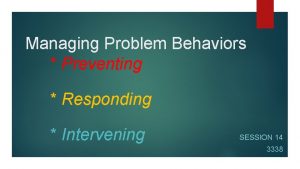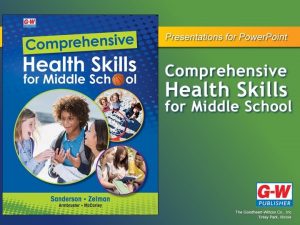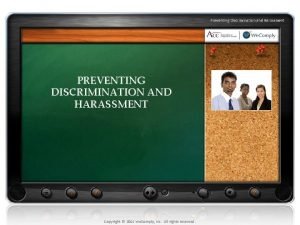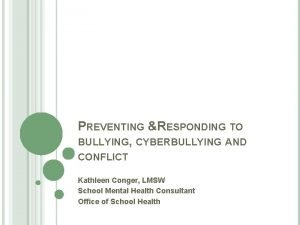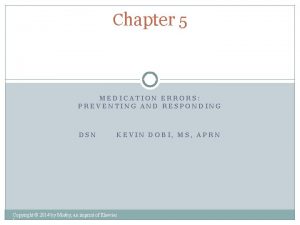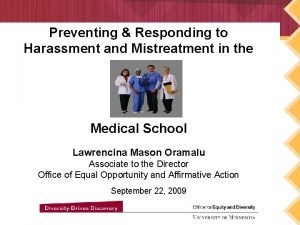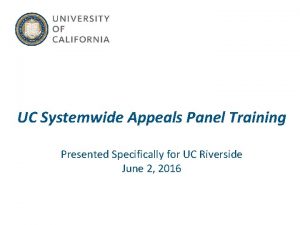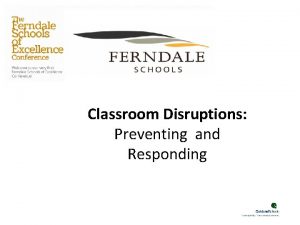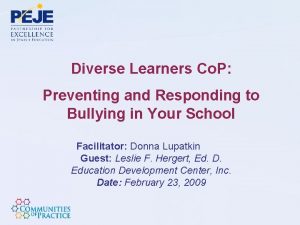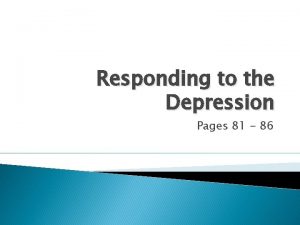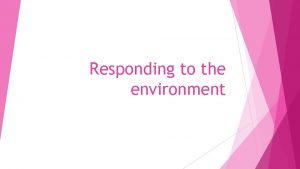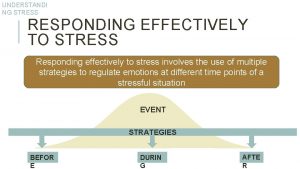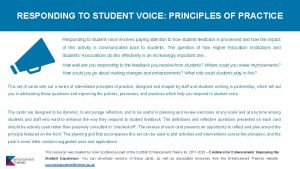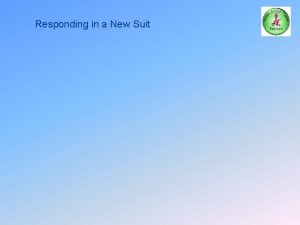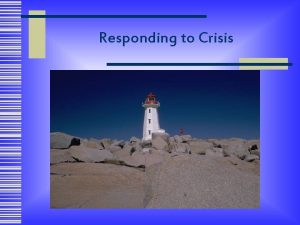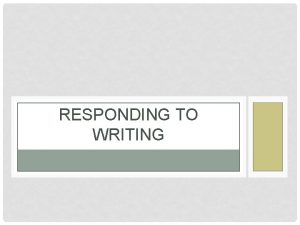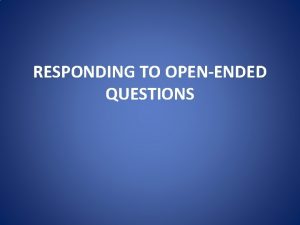Educators Team Training Session Responding to and Preventing


































- Slides: 34

Educators Team Training Session Responding to and Preventing Sexual Violence Project – Paqtnkek

Agenda • 9 – 9: 30 / Intro • 9: 30 – 10: 30 / What is Sexual Violence, Rape Culture, Coercion & Consent? • 10: 30 – 10: 45 / BREAK • 10: 45 – 11: 45 / What is Sexual Violence against Indigenous Women & Communities? • 12 – 12: 45 / LUNCH • 12: 45 – 1: 45 / Facilitating on Sexual Violence • 1: 45 – 2 / BREAK • 2 – 3 / Workshops & Handouts • 3 – 3: 15 / BREAK • 3: 15 – 4: 00 / Scenarios & Self-Care • 4: 00 – 4: 30 / Outro

Intro • welcome & introductions • project update and how Educators Team fits in (Advisory Committee, Supporters Team, Healing & Ceremony, Policies & Procedures) • individual commitment to community commitment • our group agreement • our self-care • questions & concerns • evaluations

What is Sexual Violence? (WHO) • sexual violence is any sexual act, attempt to obtain a sexual act, unwanted sexual comments or advances, or acts to traffic or otherwise, directed against a person’s sexuality using coercion, by any person regardless of their relationship to the survivor/victim, in any setting, including but not limited to home, community, school, and work.

QUESTION/REFLECTION what do you think of this definition? what is good? what is bad? what is missing? how will we, as community educators, define sexual violence? • what is sexual violence to you? what is your definition? • •

Re: Cyberviolence… • • • cyberbullying digital harassment sexting – if you are under 18 or someone else is under 18 and take/share sexually explicit picture… even depictions/drawings… against the law!!! – except! when under 18, the photo is within lawful sexual activity as long as pictures created together and shared with one another… but now you have to think about the age of consent… • • • online revenge porn cyberstalking sexual exploitation of children and youth via Internet online hate speech Bill C 13, the Protecting Canadians from Online Crime Act, became law. This legislation makes it a criminal offence to knowingly publish, distribute, transmit, sell, make available or advertise intimate images. – criminal harassment – uttering threats and intimidation – Extortion • Noah film

What is Rape Culture? • rape culture is sexual violence that is normalized – encouraged – in our dominant culture • dominant culture is one that perpetuates patriarchal/sexist, racist, colonial, capitalist values and behaviours

QUESTION/REFLECTION • what are some examples of sexual violence? • how recognized are they within rape culture? • how frequent are they? – Stranger versus Acquaintance versus Partner – Child Sexual Abuse versus Abuse against Sex Worker – Survivor/Victim is White versus Survivor/Victim is Non -White/Mi’kmaw – Perpetrator is White versus Perpetrator is Non. White/Mi’kmaw – Physical Abuse versus Verbal Abuse versus Sexist Comments

QUESTION/REFLECTION • what about. . . Low Recogni tion Stranger Rape High Acquaintance/ Partner Rape Frequen cy Low

QUESTION/REFLECTION • what about. . . Low Recogni tion Child Sexual Abuse High Sexual Assault against a Sex Worker Frequen cy Low

QUESTION/REFLECTION • what about. . . Low Recogni tion Survivor/Victi m is “White” High Frequen cy High Survivor/Victi m is “Non. White” Low

QUESTION/REFLECTION • what about. . . Low Recogni tion Perpetrator is “Non-White” High Perpetrator is “White” Frequen cy Low

QUESTION/REFLECTION • what about. . . Low Recogni tion Physical Abuse High Frequen cy High Verbal Abuse Low

QUESTION/REFLECTION • what about. . . Low Recogni tion Verbal Abuse High Frequen cy High Sexist Comments Low

QUESTION/REFLECTION • what about. . . Low Sexist Comments High Verbal Abuse Recogni tion High Frequen cy Low Stranger Rape Acquaintance/ Partner Rape Survivor/Victi Physical Abuse m is Sexual Assault Survivor/Victi “White” m is Child Sexual against a Abuse Sex Worker “Non-White”

What is Coercion? (WHO) • Coercion can cover a whole spectrum of degrees of force. Apart from physical force, it may involve psychological intimidation, blackmail, or other threats – for instance, the threat of physical harm, of being dismissed from a job or of not obtaining a job that is sought. It may also occur when the person aggressed is unable to give consent – for instance, while drunk, drugged, asleep, or mentally incapable of understanding the situation. • QUESTION/REFLECTION: What can coercion look like? How is compromise different?

What is Consent? (DOJ) • VIDEO: Would you like a cup of tea? – https: //youtu. be/f. Go. WLWS 4 -k. U • Subsection 273. 1(1) defines consent as the voluntary agreement of the complainant to engage in the sexual activity in question. Conduct short of a voluntary agreement to engage in sexual activity does not constitute consent as a matter of law. – Only yes means yes! • For greater certainty, subsection 273. 1(2) sets out specific situations where there is no consent in law; no consent is obtained: – where the agreement is expressed by the words or conduct of a person other than the complainant – where the complainant is incapable of consenting to the activity – where the accused induces the complainant to engage in the activity by abusing a position of trust, power or authority – where the complainant expresses, by words or conduct, a lack of agreement to engage in the activity, or where the complainant, having consented to engage in sexual activity, expresses, by words or conduct, a lack of agreement to continue to engage in the activity • QUESTION/REFLECTION: What are our responsibilities when we seek consent?

What is Consent? (DOJ) • Ages of Consent – UNDER 12 – It is illegal to have sexual activity with anyone, even if you consent to it. – AGE 12 – If you are 12, you can consent to sexual activity with someone who is less than two years older than you. – AGE 13 – If you are 13, you can consent to sexual activity with someone who is less than two years older than you. – AGE 14 – If you are 14, you can consent to sexual activity with someone who is less than five years older than you. – AGE 15 – If you are 15, you can consent to sexual activity with someone who is less than five years older than you. – AGE 16 – You have reached the age of consent, except. . . – UNDER 18 – It is for someone over 18 to engage in sexual activity with someone under 18 where there is a relationship of authority, trust, or dependency (like a coach, teacher, or family member), even if the younger person consents.

Sexual Violence against Indigenous Women & Communities • Sexual violence is an issue across all communities in Canada and Aboriginal women are particularly vulnerable to and victimized by sexual violence. “Aboriginal women have faced historical violence and brutality that still continues today. This abuse affects aboriginal women physically, socially, emotionally, and spiritually. ” (Researched to Death: B. C. Aboriginal Women and Violence, 2005) – Aboriginal women 15 years and older are 5 times more likely to experience violence than non. Aboriginal women. (Statistics Canada’s 2004 General Social Survey (GSS)) – 54% of Aboriginal women reported severe forms of family violence, such as being beaten, being choked, having had a gun or knife used against them, or being sexually assaulted, versus 37% of non-Aboriginal women. (Statistics Canada’s 2004 General Social Survey (GSS)) – Approximately 75% of survivors of sexual assault in Aboriginal communities are young women under 18 years of age. Approximately 50% of these girls are under the age of 14 and approximately 25% are under the age of 7. (Newfoundland Labrador Violence Against Aboriginal Women Fact Sheet, 2008) – Aboriginal women between the ages of 25 and 44 years are 5 times more likely than all other women in the same age group to die as a result of violence. (Newfoundland Labrador Violence Against Aboriginal Women Fact Sheet, 2008) – 1, 181 women and girls identified as Indigenous were murdered or disappeared between 1980 and 2012. (Royal Canadian Mounted Police’s 2015 Missing and Murdered Aboriginal Women: A National Operational Overview)

QUESTION/REFLECTION • what is sexual violence against Indigenous women and communities? – sexism, racism, colonization, capitalism – Residential Schools – Missing and Murdered Indigenous Women – Sex Trafficking of Indigenous Women – lateral violence • what else does sexual violence against Indigenous women and communities look like?

Facilitating on Sexual Violence • Gender-Based Analysis Plus – What is sex? – What is gender? • Power Flower – What is power? – What is violence? • Feminism – No judgment – Choices

Gender-Based Analysis PLUS • • Gender refers to the characteristics associated with “feminine” and “masculine, ” as defined by society, culture, and history. It changes over time and between cultures. Gender is not necessarily determined by sex. Gender roles are the learned and expected behaviours that define and influence the responsibilities, activities, constraints, and opportunities that exist for women and men, girls and boys, in a given society. Some of the variables that influence gender roles in society include age, class, race, ethnicity, religion, as well as geographical, economic, and political environments. Gender exists on a continuum, meaning femininity and masculinity exist in differing degrees; all influenced by these many other variables. Plus… We can use sex and gender analysis as an entry point for analyzing an issue, but women, boys, and girls are not homogenous groups. A variety of factors, sometimes referred to as identities, such as age, culture, language, sexual orientation, education, ability, geographic location, migration status, faith, ethnicity, and socio-economic status, merge with sex and gender to create someone’s experiences… factors that intersect with sex and gender to shape individual and group experiences.

QUESTION/REFLECTION • Power Flower Exercise: Self-Work/Self-Reflection • Sexual violence is about power/control over, not about sex! • Each petal is a factor… How much power do you hold in our dominant culture? • • Gender Sexual Orientation Race Ability Class Education Also… Age, Location, Culture, Language, Religion, Ethnicity

Feminism • feminism is ending patriarchal domination of women and men, girls and boys – patriarchy is a social system in which males hold primary power, predominate in roles of political leadership, moral authority, social privilege, and control of property; in the domain of the family, fathers or father-figures hold authority over women and children • QUESTION/REFLECTION: how does patriarchy impact women? how does it impact men? how about those of other genders? • oppression means the absence of choices for some individuals and groups (and of course, privileges for others!) • empower individuals and groups to make their own choices without judgment and based on strengths and values of individuals and groups – this is self-determination… leading to Indigenous feminism!

Facilitating on Sexual Violence in Indigenous Communities • Indigenous Feminism – a political, social, and cultural movement and theory that seeks equality and sovereignty for Indigenous people globally. It is a branch of feminist theory and practice that advocates not just equally with men, but with the decolonization of Indigenous men and women. Indigenous feminism developed out of a need to define the complexities that arise for Indigenous women (and men) as a result of the intersections of race, ethnicity, and gender. – environment of land (free, prior, and informed) like environment of women (reproductive justice) • Seven Sacred Teachings – Courage, Wisdom, Respect, Love, Honesty, Truth, Humility

What is Confidentiality? • VIDEO: Confidentiality is about. . . – https: //youtu. be/o. KGt. JE 84 w. IQ • hold confidentiality, except for duty to report… • where someone discloses intention to harm herself or others, where someone discloses child or elder abuse (physical, emotional, sexual, neglect) • There are different kinds of child abuse (under 16): – Physical abuse The intentional use of force on any part of a child's body that results in injury. – Emotional abuse Anything that causes serious mental or emotional harm to a child, which the parent does not attempt to prevent or address. – Sexual abuse The improper exposure of a child to sexual contact, activity or behaviour. – Neglect Any lack of care that may cause significant harm to a child's development or endangers the child in any way.

What is Confidentiality? • how will we, as community educators, define confidentiality? – group to define! – what does a breach of confidentiality look like? what do you do? • Confronting the person who leaked? Can’t join the group anymore. • Stop it before it gets too out of hand? Support? Two or more people helping to facilitate? • Follow up with the person who shared • Acknowledge but then divert it back • what will we, as community educators, do to practice and promote confidentiality? – group agreement on confidentiality – what do we agree to keep confidentiality?

Workshops & Handouts – workshop guide and handout for grade 5 – workshop guide and handout for grades 6 -8 – workshop guide and handout for grades 9 -12 – workshop guide and handout for parents, guardians, caregivers • • what do you think of these workshops? what is good? what is bad? what is missing? what do we, as community educators, need to do to organize and facilitate them?

Scenarios – Disclosure • how will we, as community educators, respond if the following happens… – someone discloses in or after the workshop – sometimes it is hard to know what to say and how to be supportive when someone tells you about the violence they have experienced. Sometimes people are angry, sometimes sad, and sometimes they tell you something and laugh, as if it is unimportant. All of these responses are normal responses to violence. – QUESTION/REFLECTION: What are other normal responses to violence?

Scenarios – Disclosure • • • “I’m sorry this happened. ” Acknowledge their experience and how it affected their life. You can use words to show you empathize using phrases like: “This must be really tough for you” and “I’m so glad you are sharing this with me”. “It’s not your fault. ” Survivors may blame themselves, especially if they know the perpetrator personally. Remind the person – maybe even more than once – that they are not to blame. “I believe you. ” It can be extremely difficult for people to come forward and share their story. They may feel ashamed or they may fear being blamed for the violence. So when someone shares their experience with you, the best thing you can do is to believe them. “I’m here to listen. ” Remind the person that you are there to listen and try to understand. “You can trust me. ” If a survivor opens up to you, it means they trust you. Reassure them that you won’t judge them and respect them by respecting their privacy. “Are you open to getting other supports? ” A survivor might need other supports, even if the violent experience happened a while ago. You can offer to connect them with formal supports in community.

Scenarios – Disclosure • QUESTION/REFLECTION: what will we, as community educators, say? • QUESTION/REFLECTION: what will we, as community educators, do?

Scenarios • QUESTION/REFLECTION: are there other scenarios that might happen in our workshops?

Self-Care • QUESTION/REFLECTION: what will we, as community educators, do to practice self-care individually and as a team?

Outro • questions & concerns • letter of agreement & confidentiality agreement with AWRC • honorarium • finding your partner(s) for co-facilitation • scheduling sessions • evaluations for sessions • scheduling check-in & debrief meetings with Educators Team • further training on? • evaluations • thank you!
 Team norming session
Team norming session Chapter 24 lesson 2 preventing and treating stds
Chapter 24 lesson 2 preventing and treating stds Chapter 9 resolving conflicts and preventing violence
Chapter 9 resolving conflicts and preventing violence Chapter 14:2 preventing accidents and injuries
Chapter 14:2 preventing accidents and injuries Chapter 9 resolving conflicts and preventing violence
Chapter 9 resolving conflicts and preventing violence Chapter 13:2 preventing accidents and injuries
Chapter 13:2 preventing accidents and injuries Measurement and evaluation for health educators
Measurement and evaluation for health educators Training session outline
Training session outline Facilitate learning session meaning
Facilitate learning session meaning Training session design
Training session design Welcome to the training session
Welcome to the training session Warm up introducing yourself
Warm up introducing yourself Opening prayer for training session
Opening prayer for training session Manipulated variable and responding variable graph
Manipulated variable and responding variable graph Why are line graphs powerful tools in science?
Why are line graphs powerful tools in science? Congratulating dialogue
Congratulating dialogue The fourth step in the scientific method is
The fourth step in the scientific method is What is a responding variable
What is a responding variable Making and responding to requests 2 bac
Making and responding to requests 2 bac Chapter 20 preventing kitchen accidents
Chapter 20 preventing kitchen accidents Chapter 16 preventing infection
Chapter 16 preventing infection Preventing kitchen accidents worksheet
Preventing kitchen accidents worksheet Robert vischer empathy theory advantages
Robert vischer empathy theory advantages Chapter 4 preventing injuries through fitness
Chapter 4 preventing injuries through fitness Chapter 15 preventing infection
Chapter 15 preventing infection Preventing hand injuries
Preventing hand injuries Workers compensation puncture
Workers compensation puncture Preventing ageing unequally
Preventing ageing unequally Which is mainly responsible for preventing erosion
Which is mainly responsible for preventing erosion Missouri educators trust
Missouri educators trust Professional association of georgia educators
Professional association of georgia educators Nyhre
Nyhre Hbs course pack
Hbs course pack Texas assessment management
Texas assessment management Lean innovation educators summit
Lean innovation educators summit
